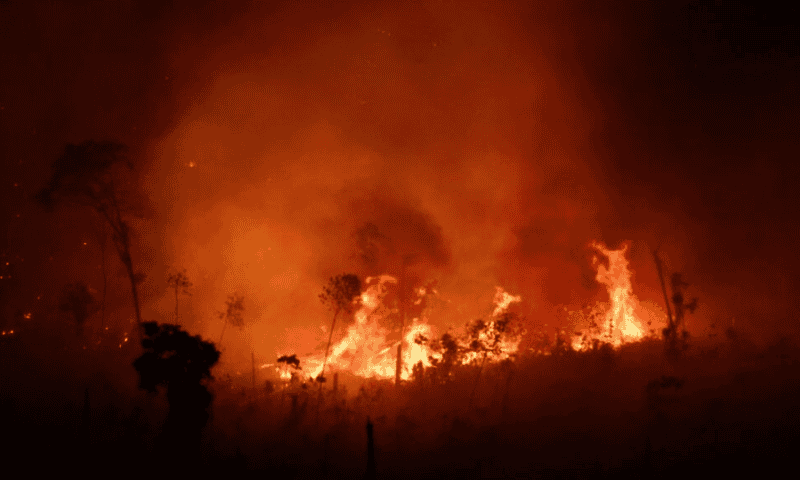SAO PAULO – The number of fires in Brazil’s Amazon rainforest region surged to a record high for the month of July in almost two decades, government data showed on Thursday, amid a drought in the region fanned by climate change.
The Amazon, the world’s largest rainforest, plays a vital role in curbing global warming because of the vast amounts of greenhouse gas it absorbs.
Satellites detected 11,434 fire hotspots in the Amazon in July, the largest number for that month since 2005, data from Brazil’s National Institute for Space Research (Inpe) showed.
Fire hotspots are the fastest indicator of the state of fires in the region, but do not indicate the severity of the blazes.
Slower and more precise data through June that tracks the area burned showed 17,582 square km (6,788 square miles) have burned in the Amazon, the largest area since 2003.
The drought in the Amazon since last year means there is more dried out vegetation to feed the fires, which often peak between late August and the end of September.
Unlike in the western United States or the Mediterranean, fires in the humid Amazon rainforest do not occur naturally but are ignited by people, often farmers seeking to clear land to cultivate soy or raise cattle.
On Wednesday, Brazilian President Luiz Inacio Lula da Silva signed into law a new policy to control fires during a visit to the Pantanal wetlands, which borders the Amazon and is also experiencing intense fires earlier than usual.
The new bill prohibits the practice of setting fires to destroy forests or other native vegetation for agriculture or other alternative use, with limited exceptions. Lula said on X that the law would also improve firefighting.
Lula has pledged to restore Brazil’s environmental credentials after years of surging deforestation, committing to stop deforestation by 2030.
Outside of Brazil, Bolivia and Venezuela are also experiencing record fires in their parts of the Amazon.

